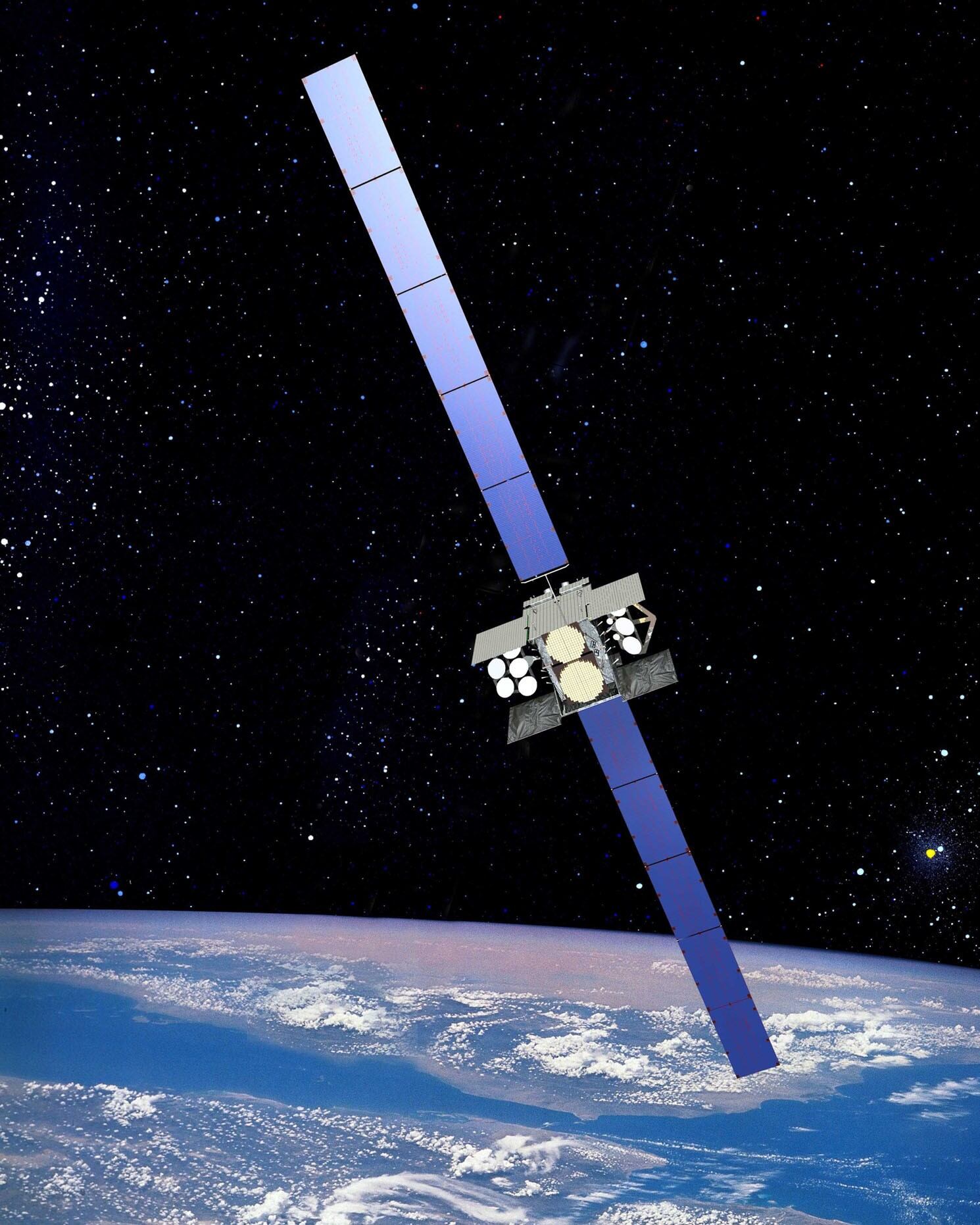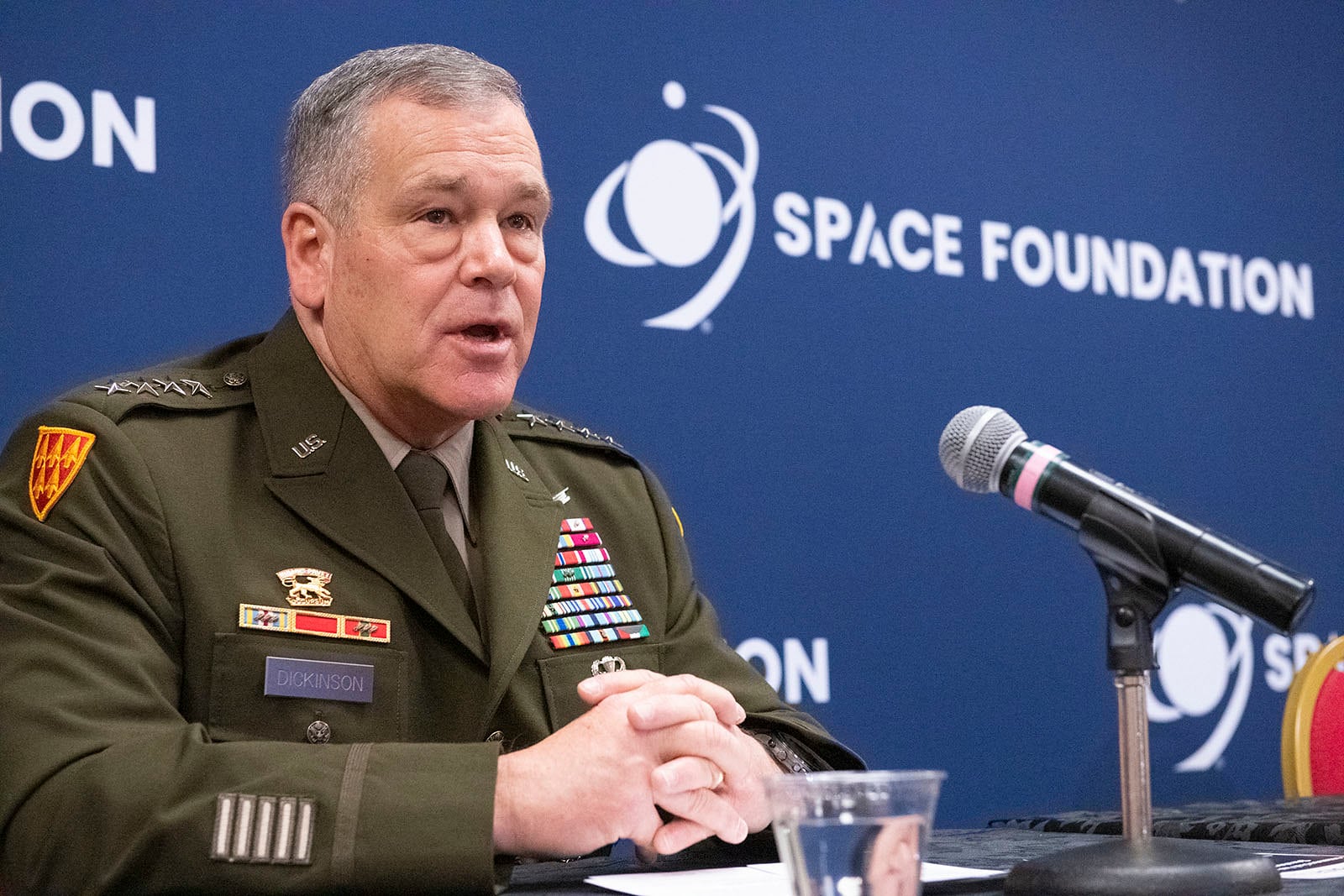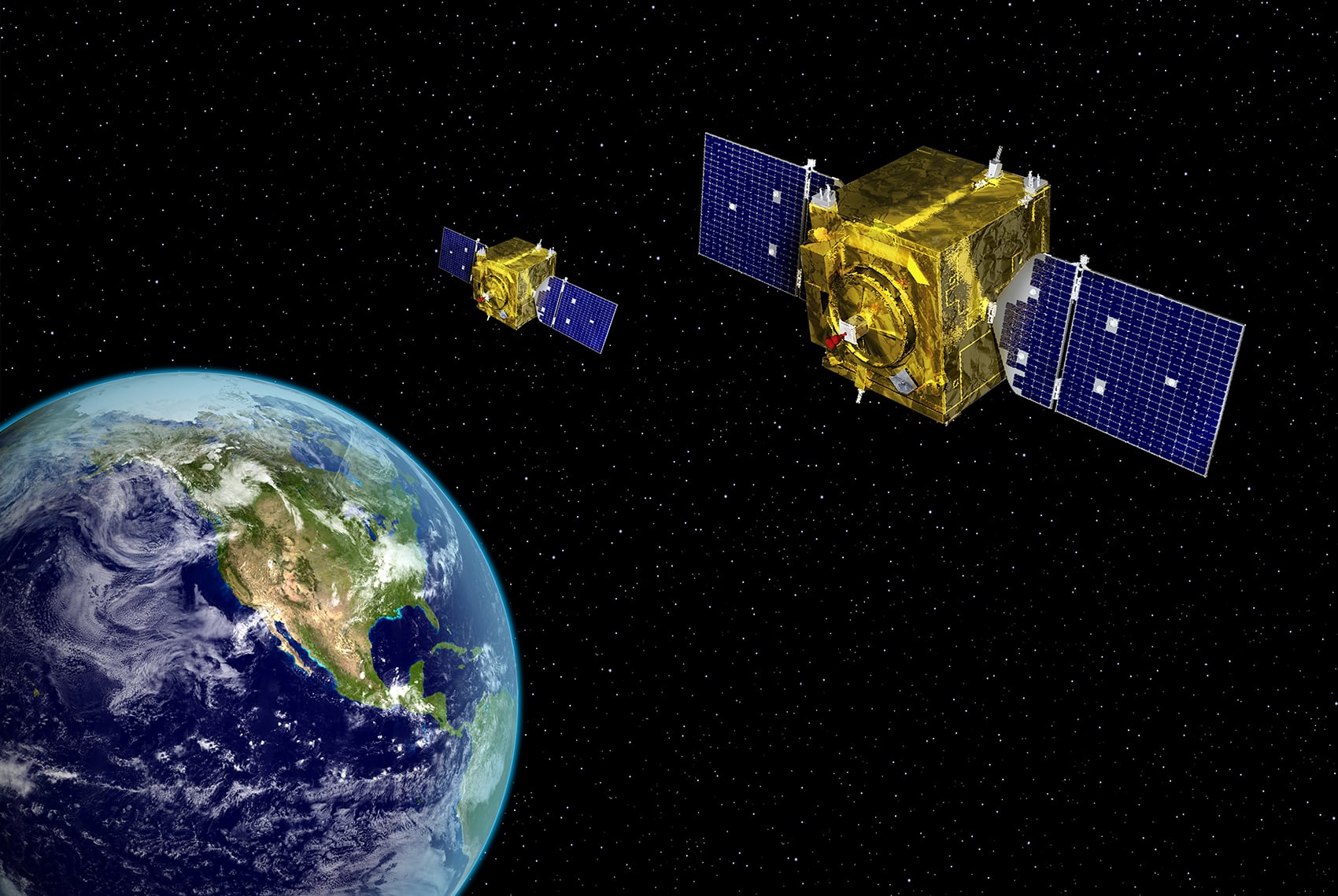COLORADO SPRINGS, Colo. — U.S. Space Command leaders say a future where satellites can be refueled and upgraded in orbit for sustained maneuverability could come as soon as 2030.
Lt. Gen. John Shaw, SPACECOM’s deputy commander, said he’s eyeing an initial in-space demonstration by 2026 and wants all future space observation satellites to be equipped for refueling or other life-extension capabilities by the end of this decade.
Shaw told reporters April 19 on the sidelines of the Space Foundation’s Space Symposium in Colorado Springs, Colo., the command is interested in any technology that will support “dynamic space operations,” its vision for satellites — particularly those surveilling activities and objects in orbit — that can maneuver to perform their mission.
RELATED

Because fuel capacity often determines how freely a satellite can travel, equipping spacecraft with refueling ports and launching servicing systems to orbit is an attractive proposition for the command. But rather than dictate the parameters of the 2026 demonstration, Shaw said SPACECOM wants its industry and government partners to bring their own ideas to the table.
“We do not want to be solution oriented,” he said. “Show me something I can do that gives me an idea of what I’m trying to get to by 2030 and how we might solve this.”
Last fall, SPACECOM sent a request for information to other government agencies calling for ideas on how the defense department can realize this vision with existing resources and technology before reaching out to industry with a public solicitation.
Commercial collaboration
The command is working closely with the Space Force as they consider how to meet the need for in-orbit maneuverability. Maj. Gen. Stephen Purdy, who leads the service’s Assured Access to Space programs, said April 18 his team is working quickly to consider various solutions, particularly those being developed by commercial companies.
“We’re really looking at the commercial market,” he told reporters during an April 18 briefing. “It is amazing how many companies are into the on-orbit servicing and maneuver [mission.] It’s actually hard to keep track.”
Purdy said the Space Force is working in parallel to industry timelines and plans to launch a test mission in 2025 aimed at validating a refueling standard for satellites.
More than 40 companies attended an industry day the service held on the topic in February and the Space Force’s technology hub, SpaceWERX, is working with 125 teams from industry and academia to mature in-space servicing capabilities.
Companies including Orbit Fab, a space logistics business based in Colorado, plan to field space refueling services by 2025. The company, which is partnered with SpaceWERX, the Air Force Research Laboratory and the Pentagon’s Defense Innovation Unit, plans to create a logistics network in orbit consisting of reusable “shuttles” that move fuel from storage depots to satellites.
Larger, more traditional defense companies like Lockheed Martin are also investing in space logistics capabilities.
The company told reporters during an April 17 briefing that its Lockheed Martin In-Space Upgrade and Satellite System (LINUSS) program successfully demonstrated the ability to use small satellites to sustain “critical space architectures.” The spacecraft launched in November on a Space Force mission and started demonstrating maneuverability in early 2023.
RELATED

Northrop Grumman has focused its space servicing efforts on extending the life-span of satellites through its Missile Extension Vehicle. The spacecraft has demonstrated the ability to attach to commercial satellites and provide fuel and thrust from its own supply.
Robert Hauge, president of Northrop-owned SpaceLogistics, told C4ISRNET April 17 that while the company is initially targeting the commercial market, the Space Force has been “receptive” to its capabilities.
“Our focus is getting our commercial capabilities out the door and mature and they’re watching very closely,” he said.
Courtney Albon is C4ISRNET’s space and emerging technology reporter. She has covered the U.S. military since 2012, with a focus on the Air Force and Space Force. She has reported on some of the Defense Department’s most significant acquisition, budget and policy challenges.








